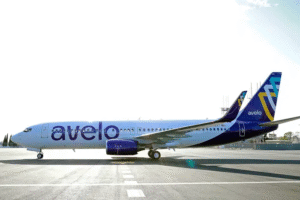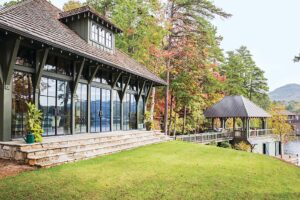Thinking of heading to Goechala? You’re in for a high-altitude adventure that delivers more than just postcard views. But before you throw on your trekking boots and pack your backpack, let’s talk money — because the real cost of the Goechala Trek goes far beyond the price tag on a tour package. I’ve done this trek myself, and I’m going to break it all down for you — in plain English, with no fluff or promotion-speak.
What Exactly Is the Goechala Trek?
One of the most famous high-altitude Himalayan treks in India is the Goechala Trek. The journey leads you to the base of the magnificent Kanchenjunga, the third-highest peak in the world, and is situated in West Sikkim. And no, you don’t summit it, but you get close enough to feel its power, especially when the sun rises behind it at Viewpoint 1. Goosebumps? Guaranteed.
This isn’t a luxury escape. It’s a demanding, 8-10 day expedition that tests your stamina, willpower, and patience. You cover over 90 km, traverse alpine forests, camp in bone-chilling weather, and wake up to frost on your tent. It’s wild, raw, and 100% worth it.
But I’ll be honest — it’s not for everyone. If you’ve never hiked before or have medical issues, this trek will feel like a full-blown military operation. But if you’re someone who’s ready to disconnect from the daily grind, sweat it out, and live simply, then Goechala might just be your calling.
When Should You Go? (It Affects the Budget, Big Time)
You’ve got two solid windows for Goechala:
Spring (April to early June)
This is when the trail explodes in colors. Rhododendrons line the forest paths, snow still lingers at higher altitudes, and the skies are usually clear. It’s also the peak season — which means prices are at their highest.
-
More demand = fewer discounts.
-
Shared jeeps, hotels, and flights are costlier.
-
Trekking groups are fuller, so it’s more social.
Autumn (Late September to mid-November)
The monsoon has washed everything clean, and you get crisp mountain views and thinner crowds. Nights are colder, but costs tend to dip a bit.
-
Easier to negotiate prices for accommodation.
-
Transport’s cheaper due to lower tourist flow.
-
Trekking operators offer off-season deals sometimes.
Avoid monsoon (June-August) — landslides, washed-out roads, and canceled treks are common.Winter (December–February) is also off limits; Goechala closes because of snow and extremely cold temperatures.
How Much Will the Goechala Trek Cost You?
Let’s cut straight to it. Here’s a real-world, experience-based breakdown of the expenses you’ll incur:
1. Trekking Package – ₹16,000 to ₹22,000
This usually includes:
-
All meals during the trek (basic but decent)
-
Tents/lodges
-
Permits (Khangchendzonga National Park + other local passes)
-
Professional guide and trek leader
-
Porters and cooks
-
First aid support (including oxygen cylinders)
From my personal experience, I went with The Searching Souls, a group I found low-key but super reliable. Their coordination, local staff, and equipment were spot-on. No excessive branding or Instagram hype — just pure trek focus.
Prices vary based on:
-
Season (spring usually more expensive)
-
Group size (larger groups = cheaper per head)
-
Whether they include transport to base camp
Make sure to confirm exactly what’s included — some budget options look cheap but leave out crucial things like sleeping bags or extra oxygen.
2. Getting to Yuksom (The Base Camp)
Most treks start from Yuksom, a remote village in West Sikkim.
-
Flight to Bagdogra (nearest airport): ₹3,000 – ₹8,000 (return)
-
Taxi/Jeep to Yuksom (via Gangtok or Jorethang):
-
Shared jeep: ₹700 – ₹1,200 (one way)
-
Private taxi: ₹3,000 – ₹4,500 (one way)
-
If you’re tight on cash, stick with shared jeeps. They take longer and are slightly uncomfortable, but budget-friendly. If you’re traveling with others, splitting a private cab can actually be cost-effective and faster.
3. Permits & Entry Fees – ₹1,000 to ₹1,500
Here’s what you need:
-
Khangchendzonga National Park Entry Fee
-
Local Environment Tax
-
Panchayat Fee
-
Inner Line Permit (only if you’re a foreigner)
If you’re booking through a trek company, these are usually bundled in. But if you’re organizing things on your own, you’ll need to get these from Gangtok or Yuksom before heading into the park.
4. Accommodation Before/After Trek – ₹500 to ₹2,000 per night
Before and after the journey, you will need to spend one night in Yuksom. Budget travelers can find simple guesthouses for ₹500 – ₹800. Mid-range stays with hot water and attached bathrooms go up to ₹2,000.
Keep in mind — there are no luxury resorts here. It’s a trekking village, so comfort is basic.
5. Trek Gear – ₹1,000 to ₹2,500 (Rent or Buy)
If you don’t own the gear, you’ll have to rent:
-
Sleeping bag
-
Trekking poles
-
Poncho/rain jacket
-
Daypack
-
Headlamp
You can rent at Decathlon stores or local outfitters in Yuksom. If you’re planning to do more treks later, buying the basics is smarter long-term.
6. Snacks & Trail Food – ₹500 to ₹1,000
Trek food covers the essentials — rice, dal, noodles, soup. But you’ll crave more, especially energy-boosting snacks.
Bring:
-
Trail mix/dry fruits
-
Energy bars or chocolate
-
Electrolyte packets
-
Instant coffee or tea
Don’t rely on finding shops on the trail — they’re either non-existent or overpriced.
7. Emergency or Miscellaneous Costs – ₹1,000 to ₹2,000
Altitude sickness, injury, or even just exhaustion can make you need a mule, extra porter, or early exit transport. Always keep a buffer. I once shared an emergency mule with another trekker for ₹1,500 when he got severe cramps near Dzongri.
Having excess and not needing it is preferable to the opposite.
8. Tips and Gratuities – ₹500 to ₹1,000
These people make your trek happen. The guide, cook, porters — they deserve appreciation. It’s not mandatory, but giving ₹100–₹200 per staff member at the end makes a difference.
Sample Budget: Budget vs. Comfortable
| Expense | Budget Trekker (₹) | Comfortable Trekker (₹) |
|---|---|---|
| Trek Package | 16,000 | 22,000 |
| Travel (flight + road) | 4,000 | 7,000 |
| Permits | 1,200 | 1,200 |
| Pre/Post Trek Stay (2 nights) | 1,000 | 3,000 |
| Gear & Snacks | 1,500 | 2,500 |
| Emergency Buffer | 1,000 | 2,000 |
| Tips | 500 | 1,000 |
| Total | ₹25,200 | ₹38,700 |
You can absolutely do the trek on a ₹25K budget with careful planning, but if comfort matters more, allow yourself that ₹35K–₹40K flexibility.
Is the Goechala Trek Worth the Cost?
Every single rupee. That’s my answer.
You’re not just paying for transport and meals — you’re paying to step away from the noise of the world. You’re paying for quiet sunrises, shared struggles with strangers who become friends, and a feeling that can’t be put into words when you first see the sun paint Kanchenjunga in gold.
I’ve done my share of Himalayan treks, and Goechala ranks right at the top. If you’re only doing one big trek this year — make it this one.
And if you’re still on the fence about going guided or solo, take my word — go with a reputed group for Goechala trek
. They strike the right balance: organized but not overbearing, budget-friendly but not cheap on safety.



